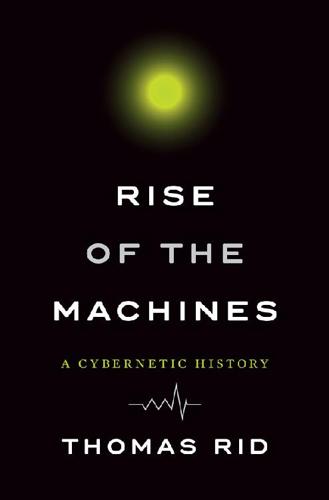
Rise of the Machines: A Cybernetic History
by
Thomas Rid
Published 27 Jun 2016
Psychedelic Buddha illustration in Reality Hackers, Courtesy Ken Goffman Photo of William Gibson in Mondo 2000. Courtesy Ken Goffman Illustration for Mondo 2000. Courtesy Ken Goffman Group photo at Cyberconf. Courtesy of Michael L Benedikt. Photo of Nicole Stenger in VPL gear. Public domain. Jaron Lanier. Photo: Kevin Kelly. VPL suits and gloves. Photo: Kevin Kelly. Full-body VPL suit. Photo: Kevin Kelly. VPL diagram. Photo: Kevin Kelly. Photo of VR machine at Whole Earth Institute’s Cyberthon, Mondo 2000. Courtesy Ken Goffman. Cyberspace illustration, Mondo 2000. Courtesy Ken Goffman. Cybersex illustration, Mondo 2000. Courtesy Ken Goffman. R.U. a Cyberpunk? Mondo 2000, 1993, Nr 10, p. 30.
…
An early virtual-reality machine, similar to the devices on display at theWhole Earth Institute’s Cyberthon in October 1990. A Mondo 2000 illustration of “cyberspace,” the “new frontier” that could be “colonized.” The virtual open range inside the machine was a mythical dimension where physics, laws, and identities would have new meanings, with its walls held up by cryptography. One of the most persistent topics of human-machine interaction in cyberspace was sex. In the summer of 1990, colorful writer Howard Rheingold coined the memorable term “teledildonics” to describe futuristic forms of bodily interaction through machine interfaces. Mondo 2000’s guide to cyberpunk, laced with irony.
…
When Garcia was back in the reality he was used to, Barlow wanted to know how it was. “Well,” Garcia said, “they outlawed LSD. It’ll be interesting to see what they do with this.”88 This tech-drug comparison at the time kept an entire subculture busy, complete with its own journals. “The closest analogue to Virtual Reality in my experience is psychedelic,” Barlow wrote in Mondo 2000 that summer. The hot new cyberpunk magazine, successor of High Frontiers and Reality Hackers, was still managed by the same crew from a villa in the lush Berkeley Hills. “Cyberspace is already crawling with delighted acid heads,” Barlow reported.89 In fact, the comparison was so common that it had its own term, the “cyberdelic.”

Valley of Genius: The Uncensored History of Silicon Valley (As Told by the Hackers, Founders, and Freaks Who Made It Boom)
by
Adam Fisher
Published 9 Jul 2018
Jane was wearing some very handsome shoes, the kind you would never see on a tech chick. I assumed that they were complete cranks. They didn’t look like any of the Mondo 2000 cyberhippies I was hanging out with at the time. R. U. Sirius: Mondo 2000 was really the first technoculture magazine starting in 1989. Previous to that, computer magazines were sort of like car magazines. They were entirely designed and oriented toward the mechanics of it, if you will. Mondo 2000 took technology and treated it as an element of counterculture. Fred Davis: I had been working for Ziff-Davis as editor of A+, PC Magazine, PC Week, MacUser.
…
Fred Davis: I had been working for Ziff-Davis as editor of A+, PC Magazine, PC Week, MacUser. Louis and Jane showed up at my house in Berkeley, literally broke, with nothing but this idea to do Wired as a high-end version of Mondo 2000. Mark Pauline: The Mondo 2000 people were like, “Well, we’ll see about that!” Dan Kottke: Before it was Mondo it was called High Frontiers, and then it changed to Reality Hackers. It was a mixture of technology and culture and literature and music and film with drugs and consciousness studies. R. U. Sirius: So it was this merger of the psychedelic influences, technological influences, and strange ideas that were going around in the area of science and pseudoscience and quantum physics and pop culture.
…
Howard Rheingold: A lot of it was, “Okay, we’re going to have sex at a distance through computers somehow.” David Levitt: The term teledildonics quickly became common. Howard Rheingold: I got so much weird attention for that one word. There were, I’ll tell you, journalists from all over the world wanted to talk about teledildonics for a little while. It was part of this cyberculture vision, the Mondo 2000 vision. Jaron Lanier: There was a tremendous pressure from the cultural underground: “Oh, I am supercool. I publish the underground magazine from Amsterdam and I know Tim Leary.” It was, “I did this and that and I’m the coolest and you have to give me a demo.” There were a lot of people like that.

From Counterculture to Cyberculture: Stewart Brand, the Whole Earth Network, and the Rise of Digital Utopianism
by
Fred Turner
Published 31 Aug 2006
But their mutated nucleotides have given us a whole new generation of sharpies, mutants and superbrights and in them we must put our faith—and power. The cybernet is the place . . . The old information elites are crumbling. The kids are at the controls.62 At one level, the notion that digital culture was growing directly out of the counterculture and the LSD scene reflected the editorial ancestry of Mondo 2000. Before coming to Mondo 2000, Goffman had edited a Bay area drug ’zine, High Frontiers, which he had subtitled “Psychedelics, Science, Human Potential, Irreverence & Modern Art.” High Frontiers featured lengthy interviews with LSD adventurers like Albert Hofmann, Timothy Leary, and Terence McKenna. In 1988 Goffman retitled the now-biennial magazine Reality Hackers, to mark its new emphasis on technology.
…
In 1988 Goffman retitled the now-biennial magazine Reality Hackers, to mark its new emphasis on technology. It soon began running articles on computer viruses, psychoactive designer foods, and high-tech paganism.63 Later that year, Reality Hackers took up the cause of cyberpunk fiction and became Mondo 2000. Its first issue featured contributions by cyberpunk heroes William Gibson, Bruce Sterling, and John Shirley, as well as pieces on hackers and crackers and Internet viruses. As Timothy Leary put it, Mondo 2000 soon became “a beautiful merger of the psychedelic, the cybernetic, the cultural, the literary and the artistic.”64 At another level, though, the link between digital technology and hallucinogens reflected a shared dream of disembodiment.
…
Autodesk, for instance, hired famed acid guru Timothy Leary to appear in its promotional video for its cyberspace initiative. Various journalists and science fiction writers also collaborated to link virtual reality to LSD. Ultimately, this group included Kevin Kelly and Stewart Brand, but its earliest and most active members were the writers and editors of the magazine Mondo 2000, including John Perry Barlow.61 In the fall of 1988, Alison [ 164 ] Chapter 5 Kennedy (aka Queen Mu) and Ken Goffman (aka R. U. Sirius), publisher and editor-in-chief, respectively, used their first-ever issue to announce that digital technologies had inherited the transformational mantel of the counterculture: All the old war horses are dead.
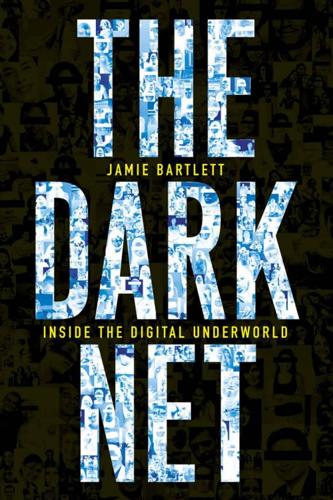
The Dark Net
by
Jamie Bartlett
Published 20 Aug 2014
Users saw it as ‘a new kind of place’, with its own culture, its own identity, and its own rules. The arrival of millions of ‘ordinary’ people online stimulated fears and hopes about what this new form of communication might do to us. Many techno-optimists, such as the cheerleaders for the networked revolution Wired and Mondo 2000 magazines, believed cyberspace would herald a new dawn of learning and understanding, even the end of the national state. The best statement of this view was the American essayist and prominent cyberlibertarian John Perry Barlow’s 1996 ‘Declaration of the Independence of Cyberspace’, which announced to the real world that ‘your legal concepts of property, expression, identity, movement, and context do not apply to us . . . our identities have no bodies, so, unlike you, we cannot obtain order by physical coercion.’
…
What was needed, May argued, was new software that could help ordinary people evade government surveillance. The group was set up to find out how. Soon the group began to meet every month in the office of Cygnus Solutions, a business that Gilmore had recently set up. At one of the first meetings in 1992, one member – Jude Milhon, who wrote articles for Mondo 2000 under the alias St Jude – described the growing movement as ‘the cypherpunks’, a play on the cyberpunk genre of fiction made popular by sci-fi writers such as William Gibson. The name stuck. ‘It was a bit of a marketing ploy, to be honest,’ May told me over the phone from his home in California.
…
For all the social panic about the ubiquity of hard-core porn on the net, there is something quite comforting about this. The net has always been accompanied by utopian dreams of sex without limits, of fantasies without boundaries. In his famous 1990 article about the future of sex in the magazine Mondo 2000, Howard Rheingold argued that ‘the definition of Eros’ would ‘soon be up for grabs’, because everyone will be as beautiful as they want and will be able to have virtual sex with anyone, anywhere. But most people don’t want fantastical sex with robots or supermodels. They want ordinary sex with real people.
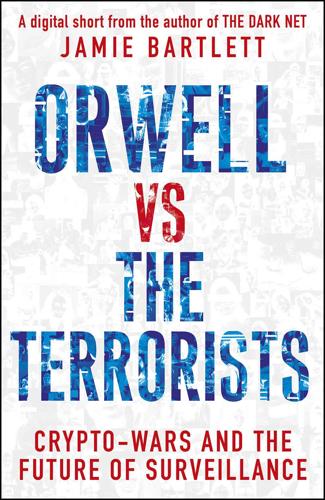
Orwell Versus the Terrorists: A Digital Short
by
Jamie Bartlett
Published 12 Feb 2015
The early nineties were ablaze with utopian ideas about humanity’s imminent leap forward, spurred by connectivity and access to information. Harley Hahn, an influential technology expert, predicted in 1993 that we were about to evolve ‘a wonderful human culture that is really our birth-right’. Meanwhile the technology magazine Mondo 2000 promised to give readers ‘the latest in human/technological interactive mutational forms as they happen … The old information élites are crumbling. The kids are at the controls. This magazine is about what to do until the millennium comes. We’re talking about Total Possibilities.’ Many of the net’s early advocates believed that, by enabling people to communicate more freely with each other, it would help to end misunderstanding and hatred.
…
Users saw it as ‘a new kind of place’, with its own culture, its own identity, and its own rules. The arrival of millions of ‘ordinary’ people online stimulated fears and hopes about what this new form of communication might do to us. Many techno-optimists, such as the cheerleaders for the networked revolution Wired and Mondo 2000 magazines, believed cyberspace would herald a new dawn of learning and understanding, even the end of the national state. The best statement of this view was the American essayist and prominent cyberlibertarian John Perry Barlow’s 1996 ‘Declaration of the Independence of Cyberspace’, which announced to the real world that ‘your legal concepts of property, expression, identity, movement, and context do not apply to us . . . our identities have no bodies, so, unlike you, we cannot obtain order by physical coercion.’
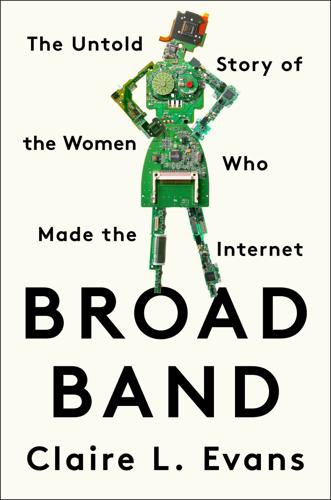
Broad Band: The Untold Story of the Women Who Made the Internet
by
Claire L. Evans
Published 6 Mar 2018
The cultural work of making Community Memory approachable to the people fell largely to Jude Milhon, a notorious female hacker and writer who would later come to be known as St. Jude, patroness of the “cypherpunks,” a computer subculture devoted to matters of encryption and copyright. In the 1980s and 1990s, she’d coedit the influential technology magazine Mondo 2000. Jude was Ephrem’s girlfriend, and she’d met Lee after placing a sex ad in the Berkeley Barb (this was the ’70s, after all). The trio got along famously. Jude seeded the Community Memory database with provocations designed to lure users to the screen. She’d post proto-crowdsourcing questions, like: WHERE CAN I GET A DECENT BAGEL IN THE BAY AREA (BERKELEY PARTICULARLY) / IF YOU KNOW, LEAVE THE INFORMATION HERE IN THE COMPUTER.
…
For her master’s thesis, she combined the do-it-yourself ethos of punk with the emerging possibilities of desktop publishing, producing an electronic magazine, Cyber Rag, on floppy disk. With color-printed labels Krazy Glued onto each disk, Cyber Rag looked the part of a punk rock fanzine. Loaded onto a consumer Mac, Jaime’s stories came to life with images pilfered from the Village Voice, the Whole Earth Review, Mondo 2000, and Newsweek collaged together on-screen as though they’d been xeroxed by hand. Cyber Rag was programmed in Apple HyperCard, with graphics drawn in MacPaint. Along with her animations, she added edgy interactive games (in one, you chase Manuel Noriega around Panama), hacker how-tos, and catty musings about hippies, sneaking into computer trade shows, and cyberspace.
…
But Jaime’s disks, packaged on floppy, were accessible to anyone with a Mac, and with their hypertext links and interactive animations, they were exactly like Web sites—long before the Web existed. Although she had a day job as a typesetter, she distributed Electronic Hollywood to indie book and record stores, where they routinely sold out. The novelty got her national media attention, which she leveraged into mail-order sales. After her magazines were featured in an issue of Mondo 2000, the cyberculture’s magazine of record, she was flooded with orders and fan mail. Although she made only five issues, she sold more than six thousand copies at six bucks a pop—not bad for disks that cost less than fifty cents to produce. When Jaime finally moved back to New York, she became Silicon Alley’s first real celebrity, a poster girl for a new generation of twentysomething media titans ready to reboot the world.

Dawn of the New Everything: Encounters With Reality and Virtual Reality
by
Jaron Lanier
Published 21 Nov 2017
In a sprawling, haunted-beautiful nineteenth-century wooden mansion above a gurgling spring in the Berkeley hills there lived a circle of roommates who published esoteric psychedelic magazines. They adapted to the VR party aesthetic by concocting a tech magazine with a psychedelic style, called Mondo 2000. (The numeral 2000 conveyed the impossibly distant, undoubtedly transcendent and terrifying future.) Mondo was the prototype for much of what has become the familiar, intoxicated-by-neoteny style of the Valley ever since. Brightly colored psychedelic goofiness. Nonsense rhyme names for whatever is new in the world.
…
My head might float by. Flattering Mirror Fiction about VR has mostly been quite dark ever since cyberpunk. The Matrix movies; Inception. Meanwhile, norms for tech journalism became hell-bent on positivity. VR engaged a new generation of journalists, like Steven Levy, Howard Rheingold, Luc Sante, and Mondo 2000’s Ken Goffman, aka R. U. Sirius. I’ll highlight two figures who were particularly influential as well as dear to me: Kevin Kelly and John Perry Barlow. Kevin is a fine example of a trusted friend with whom I disagree completely. When I met him, he was editing and writing in publications connected to Stewart Brand’s world, post–Whole Earth Catalog; he later became the first editor in chief of Wired.
…
See also surgical simulation mega-octopus Mekas brothers memory memory palaces Menke, Joseph Menlo Park Metropolis magazine Mexican-Americans Mexico Michael (gorilla) MicroCosm project micro- or nanopayments Microsoft Microsoft Research Faculty Summit Midas, King military contracts mind control Minecraft Minority Report (film) Minsky, Margaret Minsky, Marvin MIT Media Lab Mitchelson, Marvin mixed reality term coined mobile phones, cheap Möbius-Orwellian tech talk modeless computation modes molecules Molici, Dave Mondo 2000 magazine monitors Monk, Thelonius Montessori school Monty Python Moog, Bob Moog synthesizer Moondust (computer game) Moore’s Law Moravec, Hans Morley, Ruth Morrow, Charlie Mortgage-backed securities motion capture suits motion parallax motion sensing motor cortex mouse, computer MSNBC Mu, Queen multiperson experiences multiperson organizationas multitouch designs multiview display Muppets music royalties and musical instruments musicians music technology music videos Musk, Elon mystery mysticism MythBusters Mythical Man-Month, The (Brooks) Naimark, Michael Naked Lunch (Burroughs?)
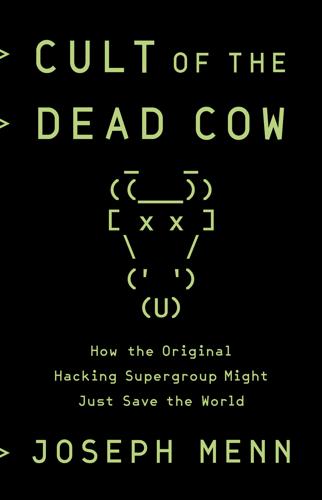
Cult of the Dead Cow: How the Original Hacking Supergroup Might Just Save the World
by
Joseph Menn
Published 3 Jun 2019
He smoked a prodigious amount of marijuana and kept hammering away through trial and error. By 1998, Josh was getting a fair amount of encouragement in person. Misha had moved to San Francisco in 1992 and had bragged about it to Luke and the others back east at every opportunity. One of Misha’s first contacts was the editor of a magazine called Mondo 2000, who reprinted his Information America piece and introduced him to her boyfriend, Eric Hughes, who was about to start the Cypherpunks mailing list, hosted by John Gilmore. Misha spread the word among hackers. The dot-com boom that began with Netscape’s initial public offering in 1995 lured more waves of cDc members and friends to California.
…
See also Hong Kong Blondes Medium (website), 99 Mentor, the, 44 Mercer, Rebekah, 196 Mercer, Robert, 196 Merry Pranksters, 22–23 Messiah Village, 48–49 Metasploit, 177 #MeToo, 158 Microsoft, 37, 63, 108, 196, 212 BackOffice software, 66, 69 Back Orifice, response to, 67–69, 77, 82–83, 96–97 hackers working for, 38, 50, 111–112, 122–124, 193 security vulnerabilities, 45, 56, 72–73, 82–83, 85, 111–112 See also Back Orifice; Windows military, 74, 78, 117–118, 136, 185, 209 See also United States government Miller, Charlie, 178–179 Miloševic, Slobodan, 102–103 MindSpring, 68 MindVox, 30–32, 63, 145 MIT, 37–38, 40, 45–46, 50, 53, 72–73 Mitnick, Kevin, 35, 44 Mixter. See Akman, Kemal modems, 59, 93, 130, 177, 204 early internet use of, 9–10, 15–16, 26, 38, 42, 48 Mondo 2000 (magazine), 65 Monsegur, Hector (Sabu), 148–150 Moore, H. D., 177 moral issues, 79–80, 102–104, 118, 132, 165–166, 201 moral crisis of technology, 78, 85, 125, 197, 212 moral reasoning, 43, 117, 124, 155, 161, 181, 211 opposition to immoral conduct, 193 See also ethics Morris, Chris, 147 Moss, Jeff (Dark Tangent), 33–34, 61 Motor 308, 17–18 Moussouris, Katie, 122 Mudge.
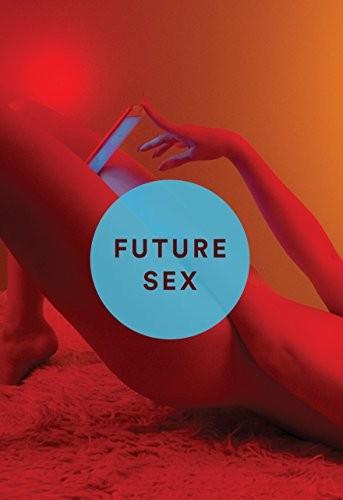
Future Sex
by
Emily Witt
Published 10 Oct 2016
In addition to the usual Amazon Wish List (almost everyone had an Amazon Wish List for their fans to buy them things, or to bypass the website’s 50 percent cut and give money directly to the performers in the form of Amazon gift cards), Elisa had links to clothes she wanted from the British online clothing store ASOS, and I clicked through them, with a vague awareness that I wanted to dress however she dressed. * * * In the 1990s, futurists had predicted a whole new way of having sex. “Picture yourself a couple of decades hence, getting dressed for a hot night in the virtual village,” wrote the editors of the San Francisco–based Mondo 2000 in 1992. “It would be something like a body stocking, but with all the intimate snugness of a condom. Embedded in the inner surface of the suit, using a technology that does not yet exist, is an array of intelligent effectors. These effectors are ultratiny vibrators of varying degrees of hardness, hundreds of them per square inch, that can receive and transmit a realistic sense of tactile presence in the same way the visual and audio displays transmit a realistic sense of visual and auditory presence.”
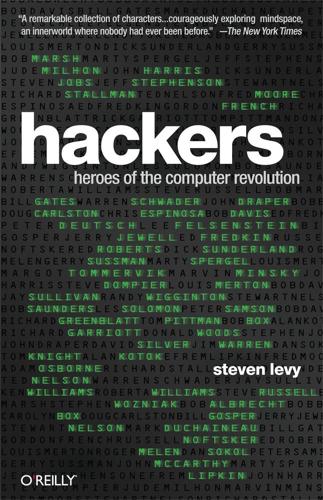
Hackers: Heroes of the Computer Revolution - 25th Anniversary Edition
by
Steven Levy
Published 18 May 2010
When the flagship publication of the movement, Mondo 2000 (a name change from Reality Hackers) began to elucidate cyberpunk principles, it turned out that the majority of them originated in the Hacker Ethic. The implicit beliefs of MIT’s Tech Model Railroad Club (Information Should Be Free, Access to Computers Should Be Unlimited and Total, Mistrust Authority . . .) have been shuffled to the top of the stack. By the time cyberpunk hit the zeitgeist, the media was ready to embrace a broader, more positive view of hacking. There were entire publications whose point of view ran parallel to hacker principles: Mondo 2000, and Wired, and loads of fanzines with names like Intertek and Boing Boing.
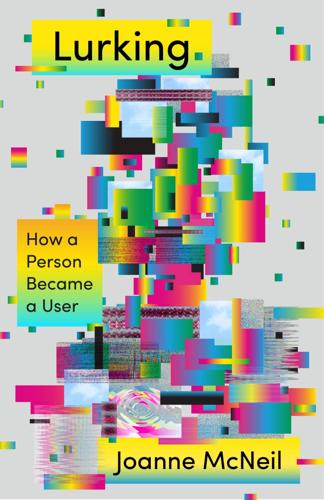
Lurking: How a Person Became a User
by
Joanne McNeil
Published 25 Feb 2020
It was the design persuasion of self-taught hobbyists, those who made their own zines or built their own web pages, and had an intuitive notion of how to work around the limitations of Kinko’s copiers or create an eye-catching layout with basic HTML skills. Videos on MTV and indie magazines like Mondo 2000 sometimes channeled this style, but it was always cyberspace-aware and cyberspace-native; the signature of the first years of pages on the World Wide Web. Archives reveal only so much. The camgirl documentation that exists is incomplete and perplexing to a visitor from its future. “I turned my cam off for good in 2003, and when Flickr launched in 2004, my archives were the first images I thought to post,” wrote Melissa Gira Grant in an essay reflecting on her time in the lifecasting community.
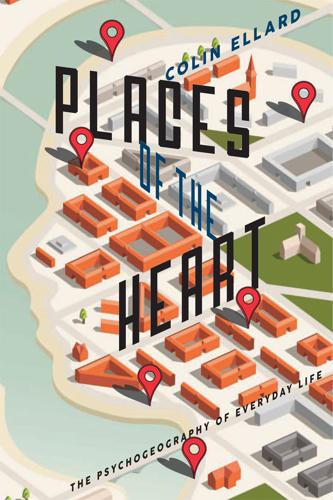
Places of the Heart: The Psychogeography of Everyday Life
by
Colin Ellard
Published 14 May 2015
no-ist 10Much illuminating information about the video game industry can be found at the website of the Entertainment Software Rating Board. Available at: http://www.esrb.org/about/video-game-industry-statistics.jsp 11An early and entertaining account of teledildonics titled “Teledildonics: Reach Out and Touch Someone” was written by Howard Rheingold in the journal Mondo 2000 (Summer, 1990). The article, complete with an opening cheeky limerick, is available in the book Arthur Berger (Ed.), The Postmodern Presence: Readings on Postmodernism in American Culture and Society (Rowman Altamira, New York, 1998). 12Project Syria and the virtual Aleppo experience is described at the Immersive Journalism website at: http://www.immersivejournalism.com/ 13The article by Rosenberg, Baughman and Bailenson describing the virtual superhero effect, titled “Virtual Superheroes: Using Superpowers in Virtual Reality to Encourage Prosocial Behavior,” was published in the journal PLOS One (2013, Volume 8, pages 1–9). 14George Stratton’s description of the inverting goggles experiments can be found in an ancient paper titled “Some Preliminary Experiments on Vision Without Inversion of the Retinal Image,” in the journal Psychological Review, (1896, Volume 3, pages 611–617).
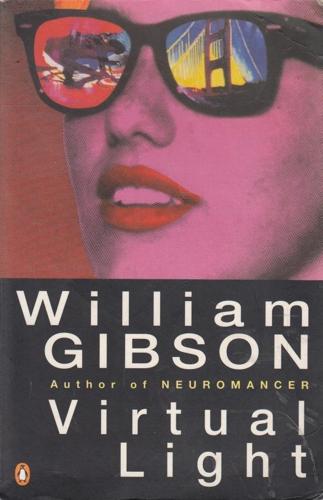
Virtual Light
by
William Gibson
Published 1 Jan 1993
(From another work commissioned for this exhibition, Richard Rodriguez's powerful 'sodom: Reflections on a Stereotype," I appropriated Yamazaki's borrowed Victorian and the sense of its melancholy.) The term Virtual Light was coined by scientist Stephen Beck to describe a form of instrumentation that produces "optical sensations directly in the eye without the use of photons" (Mondo 2000). Rydell's Los Angeles owes much to my reading of Mike Davis's City of Quartz, perhaps most particularly in his observations regarding the privatization of public space. I am indebted to Markus, aka Fur, one of the editors of Mercury Rising, published by and for the San Francisco Bike Messenger Association, who kindly provided a complete file of hack issues and then didn't hear from me for a year or SO (sorry).
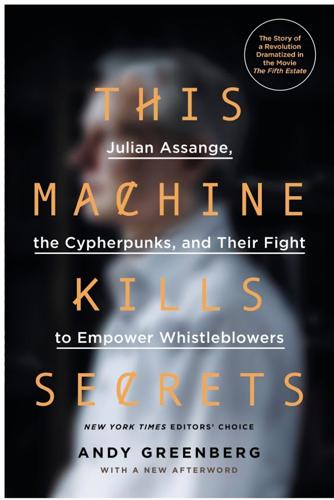
This Machine Kills Secrets: Julian Assange, the Cypherpunks, and Their Fight to Empower Whistleblowers
by
Andy Greenberg
Published 12 Sep 2012
But it was Jude Milhon, Hughes’s girlfriend several decades his senior, who provided the group’s name. At the time, science fiction authors like William Gibson and Neal Stephenson had adopted the “cyberpunk” genre, stories of bohemian hackers fighting steely megacorporations in virtual worlds. But Milhon, a writer for the early technoculture magazine Mondo 2000, told Hughes that the group he and May were creating wasn’t composed of mere cyberpunks, but a new species of hacker: “cypherpunks.” So Gilmore’s e-mail forum was christened the Cypherpunk Mailing List. As it blossomed to nearly a thousand subscribers over the mid-1990s, its physical meetings would expand too.

Crypto: How the Code Rebels Beat the Government Saving Privacy in the Digital Age
by
Steven Levy
Published 15 Jan 2002
Only dedicated individuals, willing to suffer the consequences of government sanction, could assure that the tools got circulated into the Internet’s bloodstream. After that, John Gilmore said, “It would take a pretty strong police state to suppress this technology.” One unexpected highlight was an observation made by Hughes’s companion, a leather-clad writer who penned articles for the digital hippie magazine Mondo 2000 under the name St. Jude. Listening to the visions of overturning society with modular arithmetic, she made the connection with the recent rise of so-called cyberpunks—hackers turned hipsters by linking the in-your-face iconoclasm of punk-rock rebels with the digital revolution. “Hey,” she called out, “you guys are cypherpunks!”